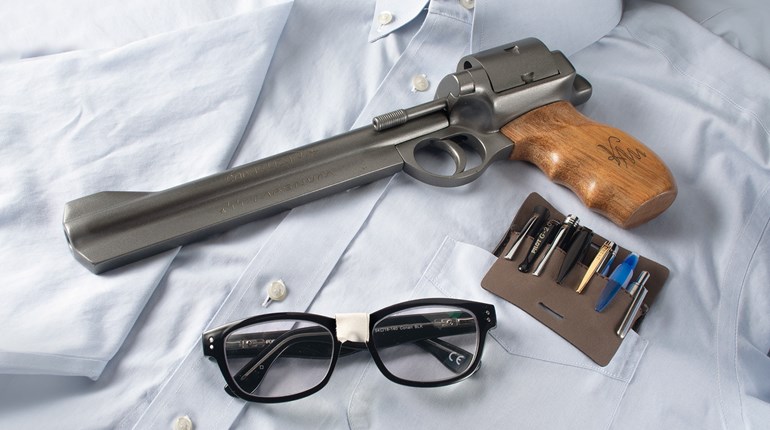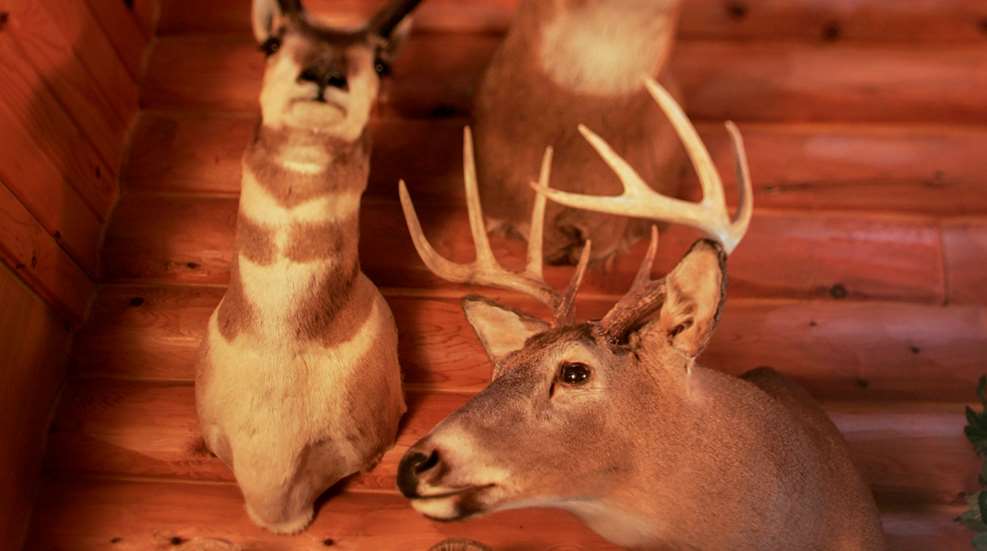
Most of the non-hunting world, particularly the “woke folk,” has a distorted idea about taxidermy. Your Biden-voter neighbor no doubt pontificates, when you are not around, about your ego and your need to dominate innocent critters. He is wrong on that, as he is wrong on most things.
Hunters understand that none of that is true. Our mounts are memories preserved. Each one is a lasting tribute to a great day in the outdoors and a reminder of how extraordinary the hunting experience can be. It’s also a memorial to the animal that allowed you the experience. Every animal we mount in taxidermy is preserved forever, which is something that occurs to only a very small percentage of animals. Most wild critters die horribly and unnoticed. We hunters make a select few immortal. As such, we owe explanations or apologies to no one.
You may have an expansive trophy room filled with multiple trophies from around the world, or your prized trophy may be only the whitetail buck you shot on public land that hangs in your living room. No matter, taxidermy mounts hold a very special meaning to each hunter who cared enough to pay a taxidermist to preserve them. So when these mounts are threatened, it’s cause for panic.
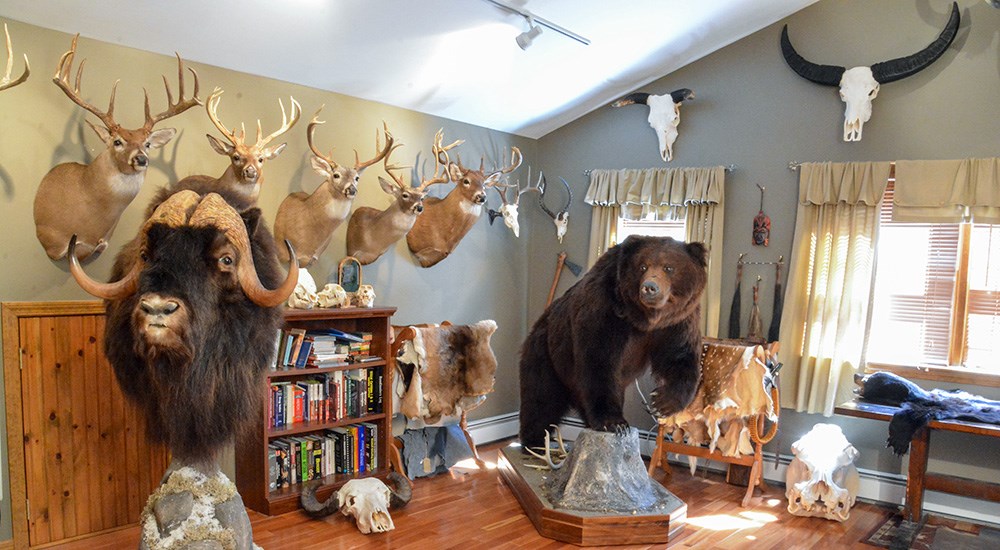 When the author discovered he had a problem with bug infestation in his game room the first thing he needed to do was breathe deeply. After he learned the products and procedures involved to save everything, the next big step was making a plan to empty the room to perform most work outside. It all was painstaking.
When the author discovered he had a problem with bug infestation in his game room the first thing he needed to do was breathe deeply. After he learned the products and procedures involved to save everything, the next big step was making a plan to empty the room to perform most work outside. It all was painstaking.
Coincidentally, I was talking taxidermy with a new friend when he pointed out my Coues deer mount. “Who did that mount?” he asked politely. “No offense, but it looks horrible.” I sit under this mount to work every single day, but I had not noticed that it looked like roadkill with its hair falling out in patches. I pulled out a few clumps and they were full of tiny white balls that I suspected were eggs. Then I noticed the books on top of my desk, beneath the mount, were covered with hair and debris.
A moment later I stood in shock as I saw a moth exit the thick hair of my musk ox, fly around to the front of the mount and reenter. I brushed the hair with my hand and several more flew out. I checked a brown bear tanned hide and found it full of yellow moths. They turned out to be common clothes moths (Tineola bisselliella), the same little jerks that eat my wool hunting clothes. They eat the hair follicles in the mounts, which causes the hair to fall out.
So, yes, I panicked a little. I called my friend Peter Lajoie at Game Heads Ltd. Pete is an experienced taxidermist who has won world and national titles in taxidermy competition. He has a reputation in the Northeast for producing outstanding taxidermy work. Being a good friend, he dropped what he was doing and drove to my office.
After inspecting most of my mounts he said, “You have a serious problem!” Before my panic could expand to full on “lost it” mode he continued. “The Coues deer is probably toast, but I think we can save the rest. We can’t wait, though. Every day that goes by the damage is getting worse.”
Pete hooked me up with a hunting buddy, Eric Holmquist, who was available for the next week. Pete also brought some stuff to kill the bugs and stuck around to make sure we knew what we were doing.
In the end, I suffered a little damage to the first pronghorn I shot and to one of my best whitetails, but both are barely noticeable. The Coues deer, as Pete noted, is trashed. I have another cape on the way thanks to Linda Powell, PR director for Mossberg, and I am saving my pennies and dimes to pay for the remount. Other than that, we caught it just in time. Here is how it played out.
How to Spot Damage
To determine if you have bugs, look for anything out of place in the hair: lines, clumps that are loose or falling out or any bald patches. Also look for hair or other debris under the mount. If it looks like dust or even sawdust is collecting beneath them, it can indicate a big problem. If you see what looks like old Rice Krispies, those are the larva husks. Spread the hair and look for eggs, droppings, larva casings or bugs themselves. It’s the larvae that are doing the damage, not the adult moths. Run your hand through any longhaired mounts and see if anything comes out. Look for indications around the antlers. With horned game, look at the base of the horns for signs of infestation. Hooves and bear paws are often big problem areas as it is hard to clean them completely free of meat or tissue. Look at the back of the mount where it lies against the wall, as bugs like to get in there. They like anyplace dark and humid.
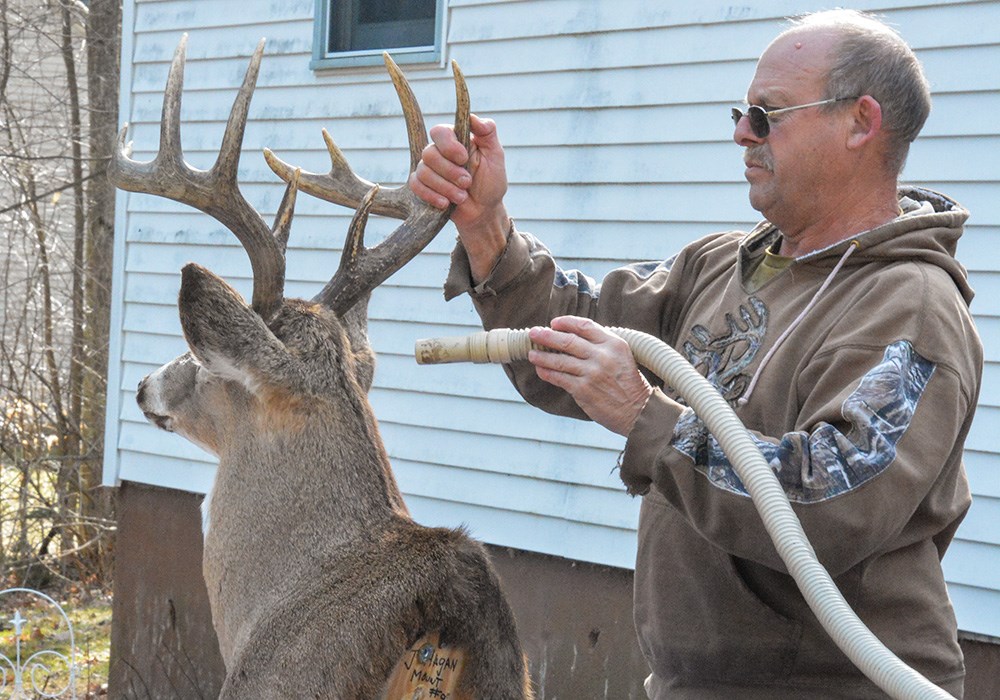
If you have bugs, just setting off a bug bomb will not be enough. It does not get in deep enough to find all the larvae and eggs, and it will only kill the current generation. Like the Terminator, they’ll be back when the next generation hatches or pupates or whatever the hell it is that makes new ones.
How Bug Damage Occurs
Apparently, poor cleaning jobs on skulls or European mounts can leave some meat in the skull, which gives the bugs food to eat, so we checked every single one. Some of the worst offenders are animals with horns that are not removed from the skull and cleaned. Pete told me that a lot of problems he sees originate with DIY turkey tails when a lot of meat is left behind. Also, it happens when somebody shoots a buck and cuts off the horns, leaving the skin or meat to dry. Both are good bets to attract bugs that will later attack the taxidermy.
John Matthews is the former lead taxidermist for the Smithsonian Institution. He cautioned to only hire the best for your taxidermy. If your taxidermist is new, or perhaps cutting corners, he may leave behind a lot of food for the bugs. They eat protein, so if a skull is not perfectly clean or if the hide is not correctly prepped and tanned you may be inviting trouble into your trophy room.
I am not sure if that was the case with the Coues deer, but it’s one of the few heads Pete did not mount. Somebody in our hunting party knew a taxidermist who gave us a group deal. Big mistake. Or not. It’s unclear why it was the epicenter of the infestation years after it was mounted.
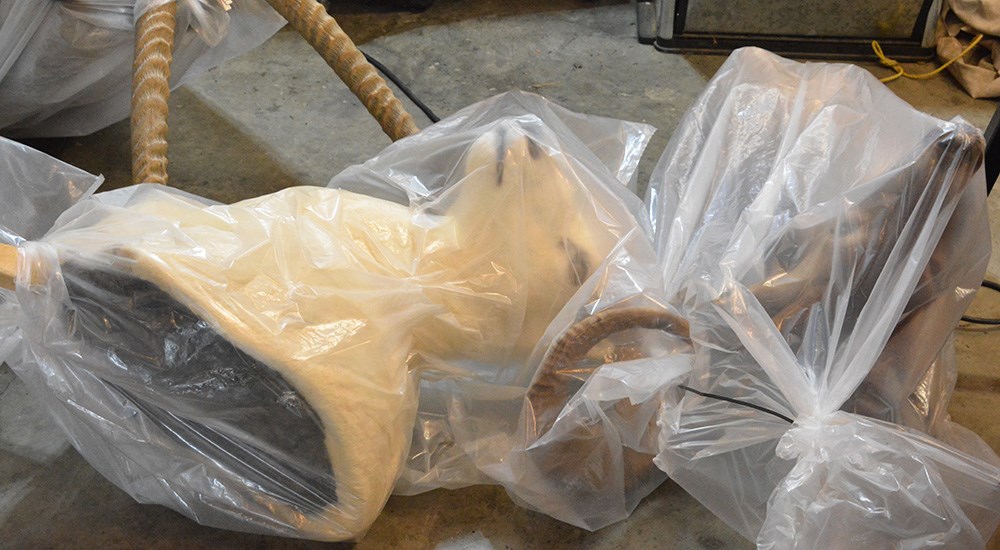
It seems like there are a lot of different bugs that will attack your taxidermy. I searched online before I started writing this and it’s terrifying. It’s almost like we don’t stand a chance. “Why then,” you wonder, “did Grandpa not have this problem?”
As might be expected, it’s the government’s fault.
I have a whitetail deer shoulder mount from a buck that my grandfather had mounted in the 1940s. Other than being darkened by age, drying out a little and now curling ears, it still looks fine. Nothing has ever tried to eat it. Museums possess mounts that go back even further and they still look pretty good. We have all seen old mounts in various bars, stores or restaurants that date back many years. Most have not seen a dusting cloth, let alone any other treatment. They age and decay, but the bugs leave them alone.
The reason for that is because, until the government banned it in 1980, most taxidermy was treated with arsenic. It worked great and any bugs trying to find a home in taxidermy died pretty fast. Up until the 19th century arsenic was commonly used as a medicine. (Actually it still is, just not commonly.) Back then it was prescribed for disorders such as tuberculosis, rheumatism and syphilis. It was also considered a better insecticide than sulfur, which would cause color changes and often fires. (How much would it suck to have your prized elk mount turn yellow and then spontaneously combust?)
Alas, arsenic is a poison. The government, probably rightly so, freaks out about poisons. Look at lead. The government went a little overboard with that one. Anyway, if your mounts are of more recent vintage than 1980, they are susceptible to bug damage. (And they are probably a lot safer to have in your house.)
What to Do
By day two, I was beginning to regret building my office on the second story because Eric and I had to remove every single mount, skull, rug and skin, well into triple digits.
Everything had to be taken down the stairs and outside to my back patio. The exceptions were the half-size musk ox, a life-size brown bear and a life-size black bear. Those we had to treat in place in my office (more on that later).
My wife, Robin, vacuumed every nook and cranny, including the walls. We wanted to remove any bugs or anything they left around. (Coincidentally she had a vacation scheduled for that week, although she had not planned to spend her days cleaning my game room.)
We were lucky with the weather. Usually mid-March in Vermont is not a good time to work outdoors. It rained the day before we started and heavily rained, sleeted and snowed the day after we finished. I guess somebody took pity on my bad luck and gave us a few decent days. Doing the mounts took almost four days and we had two more days invested in cleaning my office.
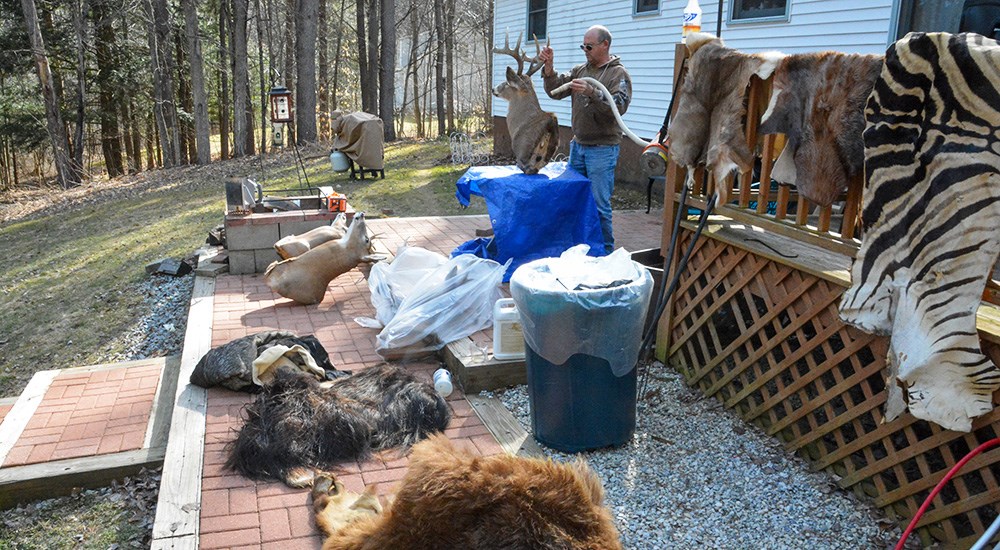
I ran a hose up to my office from the air compressor in my shop and we blew off the dust and debris from every mount. Then we brushed them out to remove as many bugs and eggs as possible. On Pete’s advice, Robin picked up a couple of stainless steel welding brushes. I was reluctant to use so harsh a brush but Pete grabbed one and started aggressively brushing my prized brown bear.
“They are mounts, not delicate, and you won’t hurt them if you go with the hair,” he said. “If this pulls out hair, it’s because you have bug damage. But, you need a brush that is able to get out the bugs and eggs.”
Then he pointed to a gallon jug of strong-smelling liquid called Mount Saver from a company called Mount Medix. “This stuff costs $400 a gallon,” Pete said, “but it’s the industry standard. It’s also all natural so it’s safer than harsh insecticides.” One gallon of concentrate is enough to do multiple collections. Mount Saver is also available in smaller, less expensive bottles as well as in premixed and ready-to-use bottles.
We mixed the Mount Saver (a concentrate that makes 10 gallons for treatment) according to the instructions then filled 1-quart spray bottles. We sprayed each mount until it was soaked, then sealed it in a large plastic bag. The mounts were then moved to my shop, where we lined them up and left them overnight. This allows the Mount Saver to fill the bag with fumes, which kills off anything the spray missed. The directions recommend at least four hours in the bag, but we left them overnight to be sure.
The next day we removed the mounts from the bags and dried them as best we could with an industrial blower that Pete loaned me. Then I put them in the weak March sun to dry a little more. Finally, we carried them up the steep fire escape to my office and placed them back on the wall.
We placed tarps under the bears to protect the hardwood floor and used drop cloths to protect the bases. We sprayed enough mixture on each mount to soak the hair and wrapped them with inexpensive plastic drop cloths made for painting. We closed up the drop cloths with clothespins. (I have to say the long hair on the musk ox soaked up an amazing amount of liquid.) Then I sealed the door to the office with wide painter’s tape and put an old blanket against the door to block underneath.
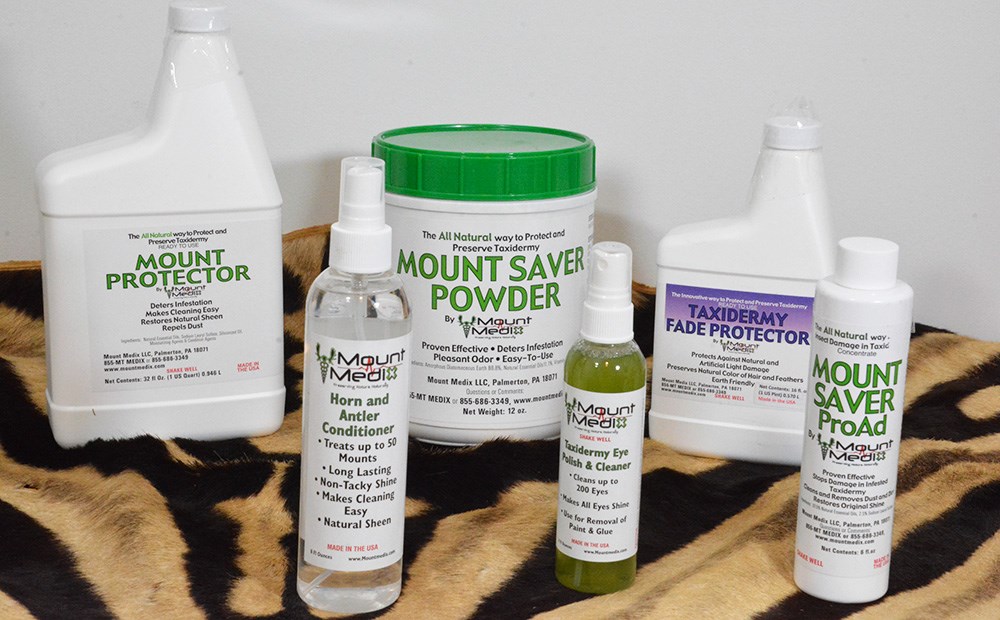 Mount Medix makes a family of products to save taxidermy from insect infestation and to perform preventive maintenance.
Mount Medix makes a family of products to save taxidermy from insect infestation and to perform preventive maintenance.
Thank God I had purchased a new laptop computer last fall because my office was uninhabitable for a few days. We tried to dry the bears and musk ox with the blower, but it was a huge job and we were about worn out by then. So, I let them finish by air-drying. Once dry, Mount Saver has a mild scent that Robin likes, but before it dries, when used in this volume, it will peel the skin off your face. (Not really, but I couldn’t work in my office for several days.) A few days later, I placed fans in the windows and opened the back door. It got cold, but the fumes abated. At night I turned up the heat a little and closed all the windows. After three or four days I could use the office with the fans going. My feet got cold, but there were no other problems. After a couple of weeks everything was dry and the office is a happy place again. The mounts that were displayed in the living space of our home were left in my shop to dry for five days. I turned up the heat and the dehumidifier and made excuses to anybody who left a gun for repair.
In the end, we used about half a gallon of Mount Saver on everything, so my cost was about $200. Money well spent. Pete drilled several holes in discreet locations in my musk ox horns and injected Mount Saver Horn and Hoof solution. He did the same with some African skulls and a Murrah water buffalo. (The holes are later filled with an epoxy called Apoxie Sculpt so they are not noticeable.)
George Ferko, the owner of Mount Medix, explained to me that Mount Saver is not a good choice for birds as it is water-based and will mat the feathers, creating a great deal of work to dry and preen the mount back to where it needs to be. I have several mounted birds, including several full-size turkey mounts. I ordered some ProAd from Mount Medix that works well on birds as it’s mixed with a fast-drying solvent like denatured alcohol. Once I have them done, this job is finished. I hope. Except that it’s highly recommended by just about everyone that I bug bomb my office. So, that’s the last step.
I am just a poor outdoor writer so I could afford to mount just a fraction of the animals I have hunted over a long career. Still, they collect over time. My first mount was a wood duck from back in the early ’70s, so there has been half a century of collecting memories. Just for fun, I added up the cost of replacing a lifetime of trophy mounts—not the hunts or replacement capes, just the taxidermy cost—and it was staggering; well into six figures. So yeah, I dodged a big bullet. Even more important are the memories we saved. It seems as though every mount has a story, many of which were told in this magazine. Those mounts represent my life, and losing them would have been emotionally devastating.
Until Mount Saver came on the market, there was not a good way to treat your trophies. Some home-remedy recommendations I found online are a bit nutty, like putting mounts in the freezer for several days. Ever try to fit a moose or elk shoulder mount in your freezer? (Matthews told me later that at the Smithsonian they often use large walk-in freezers.) Other solutions involve harsh and toxic chemicals that don’t work all that well and can damage your mounts and poison your family. I was lucky that Pete steered me in the right direction.
Preventive Maintenance
So now you know what to do if you get bugs in your trophies. But you can also take preventive measures to ensure your mounts don’t suffer bug damage.
Mount Medix makes a product called Mount Protector, which the company recommends be sprayed on your mounts every six months to a year. You can do this with the mounts in place. They recommend sliding a piece of cardboard behind the mount as it hangs on the wall to protect the wall from overspray. This helps keep the mount from drying out and cracking as it restores the luster and sheen to the mount. Best of all, it prevents future bug infestations. (I really wish I knew all this six months ago.)
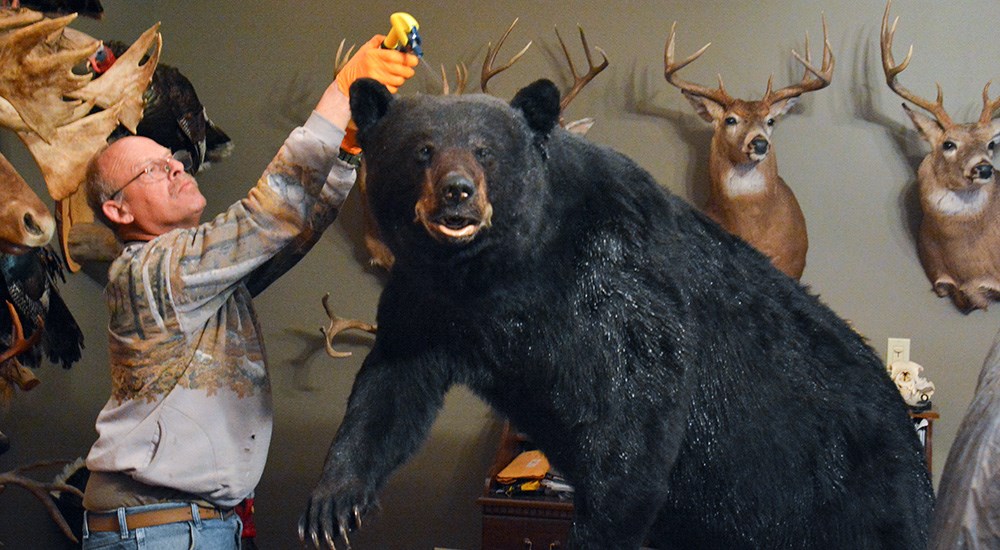
There are also products to prevent fading from sunlight, to bring the gleam back to the eyes and to make the horns or antlers shine. Think of the joy and memories that your mounts represent: Don’t you owe them just a little loving care?
Your taxidermy is priceless, but it is not maintenance-free. Do a little work now and then to help protect it and your biggest problem will be convincing your kids they need to take all of it to their homes after you die.












